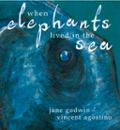AustLit
Latest Issues
AbstractHistoryArchive Description
Publication Details of Only Known VersionEarliest 2 Known Versions of
Works about this Work
-
The Artful Interpretation of Science through Picture Books
2014
single work
criticism
— Appears in: Picture Books and Beyond 2014; (p. 41-60)There is a common belief that science is about objective facts while literature expresses subjective opinions and emotions. Increasingly the gap between science and literature is becoming smaller as artistic imagination and scientific inquiry enjoy unprecedented attention in the publishing world and in the media. Picture books that engage with science offer children and teachers ways of understanding science differently. This chapter will use a number of picture books to illustrate how texts for children are opening up artistic ways for developing science understanding in content areas and encouraging general capabilities with respect to information and communication technology, critical and creative thinking, and possibly numeracy. It will also demonstrate the many common features that science and literature share such as communicating curiosity, passion and awe to inspire and instruct young readers about scientific discoveries and the wonders of the world in which they live.
-
The Children's Book Council of Australia Judges' Report 2007
2007
single work
column
— Appears in: Reading Time : The Journal of the Children's Book Council of Australia , August vol. 51 no. 3 2007; (p. 5-12) -
Untitled
2006
single work
review
— Appears in: Magpies : Talking About Books for Children , July vol. 21 no. 3 2006; (p. 33)
— Review of When Elephants Lived in the Sea 2006 single work picture book -
Untitled
2006
single work
review
— Appears in: Reading Time : The Journal of the Children's Book Council of Australia , August vol. 50 no. 3 2006; (p. 24)
— Review of When Elephants Lived in the Sea 2006 single work picture book -
The Art of Communication
2006
single work
review
— Appears in: Australian Book Review , August no. 283 2006; (p. 62-64)
— Review of Woolvs in the Sitee 2005 single work picture book ; The Wrong Thing 2006 single work picture book ; Dimity Dumpty : The Story of Humpty's Little Sister 2006 single work picture book ; Pip and the Convict 2005 single work picture book ; The Boy Who Built the Boat 2006 single work picture book ; Grandad's Phase 2006 single work picture book ; The Smallest Bilby and the Midnight Star 2006 single work picture book ; Mustara 2006 single work picture book ; My Home in Kakadu 2005 single work picture book ; When Elephants Lived in the Sea 2006 single work picture book ; Home 2006 single work picture book
-
Untitled
2006
single work
review
— Appears in: The Advertiser , 29 July 2006; (p. 10)
— Review of When Elephants Lived in the Sea 2006 single work picture book -
The Art of Communication
2006
single work
review
— Appears in: Australian Book Review , August no. 283 2006; (p. 62-64)
— Review of Woolvs in the Sitee 2005 single work picture book ; The Wrong Thing 2006 single work picture book ; Dimity Dumpty : The Story of Humpty's Little Sister 2006 single work picture book ; Pip and the Convict 2005 single work picture book ; The Boy Who Built the Boat 2006 single work picture book ; Grandad's Phase 2006 single work picture book ; The Smallest Bilby and the Midnight Star 2006 single work picture book ; Mustara 2006 single work picture book ; My Home in Kakadu 2005 single work picture book ; When Elephants Lived in the Sea 2006 single work picture book ; Home 2006 single work picture book -
Untitled
2006
single work
review
— Appears in: Reading Time : The Journal of the Children's Book Council of Australia , August vol. 50 no. 3 2006; (p. 24)
— Review of When Elephants Lived in the Sea 2006 single work picture book -
Untitled
2006
single work
review
— Appears in: Magpies : Talking About Books for Children , July vol. 21 no. 3 2006; (p. 33)
— Review of When Elephants Lived in the Sea 2006 single work picture book -
The Children's Book Council of Australia Judges' Report 2007
2007
single work
column
— Appears in: Reading Time : The Journal of the Children's Book Council of Australia , August vol. 51 no. 3 2007; (p. 5-12) -
The Artful Interpretation of Science through Picture Books
2014
single work
criticism
— Appears in: Picture Books and Beyond 2014; (p. 41-60)There is a common belief that science is about objective facts while literature expresses subjective opinions and emotions. Increasingly the gap between science and literature is becoming smaller as artistic imagination and scientific inquiry enjoy unprecedented attention in the publishing world and in the media. Picture books that engage with science offer children and teachers ways of understanding science differently. This chapter will use a number of picture books to illustrate how texts for children are opening up artistic ways for developing science understanding in content areas and encouraging general capabilities with respect to information and communication technology, critical and creative thinking, and possibly numeracy. It will also demonstrate the many common features that science and literature share such as communicating curiosity, passion and awe to inspire and instruct young readers about scientific discoveries and the wonders of the world in which they live.




